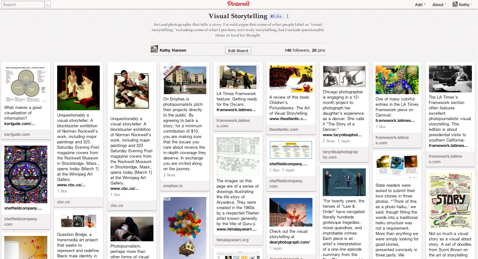Like many of my recent Q&A finds, Dr. David Sidwell popped up in one of my Scoop.it curations. I’m always intrigued by folks who are using story in higher education, but David Sidwell’s story work cover far more territory than just teaching. I’m delighted to learn of his many story-related pursuits. This Q&A will run over the next several days.
Bio: [From his blog’s “About” page:] Dr. David Sidwell, one of the few  Renaissance men in a compartmentalized world, has devoted his life and his professional expertise to making the show of life grand and worthwhile in the various institutions for whom he has worked. He is a consultant who is ready to help your organization succeed in many ways.
Renaissance men in a compartmentalized world, has devoted his life and his professional expertise to making the show of life grand and worthwhile in the various institutions for whom he has worked. He is a consultant who is ready to help your organization succeed in many ways.
He is not content to simply have a job; he wants a cause to fight for.
As a talented leader, he is expert in a variety of fields, his skills fed by enthusiasm, creativity, communication and the arts. [Read more …, as well as his personal site]
Q&A with David Sidwell, Question 1:
Q: You describe yourself as a “Renaissance Man,” and the diversity of your career certainly supports that claim. To what extent do you use storytelling in your various incarnations? Do you have a favorite professional role among the many you’ve played in your career?
A: Though I have a pretty stringent definition of storytelling, I also feel that not all storytelling events or activities need to comply with this definition. One can say “It’s the Big Bad Wolf at the door” and we have just alluded to a story that most of us know. While it’s not storytelling per se, the allusion is often strong enough to do some good.
I have found storytelling to be an extremely useful tool in all sorts of ways. I think this has been the most surprising thing to me as well — just how many uses storytelling, or the allusion to storytelling, has. As program director of a nonprofit cultural arts center and living-history museum, I was able to use stories in staff meetings to inspire my staff — and they used stories to inspire me and each other. The sharing of stories became a vital tool for improvement and reflection as we told each other of successes and failures. This was real storytelling. I’ve heard it said that the only reason for an “open door policy” is so that the director doesn’t smash his face on the way out to see his or her staff, and this proved to be true in this context as well. Some staff, in their living-history duties, would often cook a lovely lunch that was shared amongst the volunteers and staff that were active on those days. If I ever joined in the lunch, I always earned it by washing dishes afterward — the job no one wanted. But in so doing, I was able to share stories of my personal life with the staff and volunteers present, and I listened to their stories, too. This simple sharing of stories made for a lot of camaraderie that helped us get things done faster, better and with more productivity.
I also used stories in marketing and public relations, and in fundraising. I discovered that the best way to raise money for your organization is to have your Board of Directors tell positive stories often to their friends, many of whom either have funds, influence or other resources that can be called upon.Of course, it’s important to feed your Board of Directors great stories regularly, too.
As a university professor, I use stories when I want my students to actually remember something. The images found in stories embed themselves in the brain better than data or facts, so I end up going from story to story rather than from concept to concept or fact to fact.
As a nonprofit business consultant, I am currently being much more deliberate about using storytelling in organizational contexts. I have a natural knack for helping nonprofit organizations succeed, whatever the problem. I’m able to help them raise money, further their cause, plan strategically, come up with curriculum materials and help in their marketing. But being more deliberate about using storytelling in these contexts has really helped me sharpen and hone my skills and communicate to my clients how interconnected everything is — through story.











